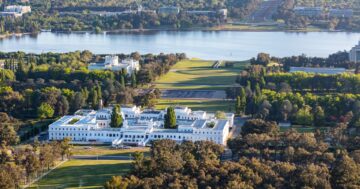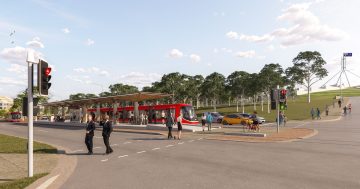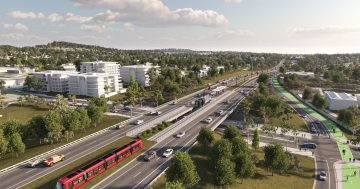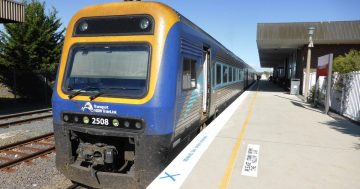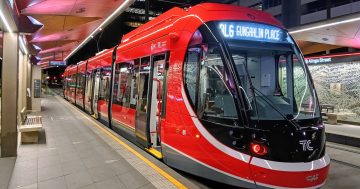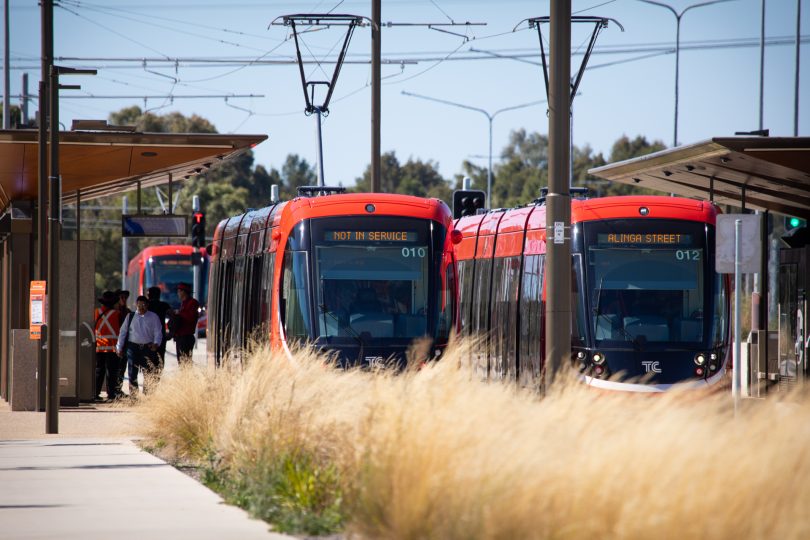
Advocacy groups have pushed for the Commonwealth to take on some of Canberra’s light rail projects at a Federal inquiry. Photo: Michelle Kroll.
Light rail through the Parliamentary Triangle and from Kingston to Queanbeyan needs to have more Commonwealth involvement in order to benefit Canberrans and the wider community.
That’s according to advocacy groups who outlined their cases to the National Capital Inquiry at Parliament House on Monday (31 July).
The Canberra-Sydney Rail Action Group has been calling for faster, better integrated and more frequent rail services between the two capital cities for a number of years, as well as the enhancement of existing services through regional NSW.
Group co-convenor Bob Bennett told the Federal inquiry that running a light rail service from Barton to Kingston and then through to Queanbeyan would escalate the project to the Commonwealth level.
“Canberra has two looming transport problems,” Mr Bennett said.
“The amount of freight traffic through Canberra [is increasing] … and traffic on a main arterial road [from Queanbeyan to Manuka] is expected to be experiencing gridlock by 2030.”
He argued buses could only be part of the answer – and only if dedicated bus lanes were built the entire length of the route, otherwise they’d just become part of the traffic.
Mr Bennett pitched the existing rail line between Kingston and Queanbeyan was standard gauge – the same infrastructure needed for light rail – and while some maintenance would be needed, the only new infrastructure would be stations.
So taking on the project wouldn’t be a huge cost.
“There’s already a rail corridor between Kingston and Queanbeyan … then [there’s space] down Wentworth Avenue, so it can be done,” he said.
Taking light rail from Queanbeyan to Kingston, and then onwards to Barton, hasn’t been costed yet, but Mr Bennett said it would bring multiple benefits.
These would include a quick linking service for people taking the train from Sydney to Queanbeyan, making it a more attractive travel option over flying. It would also improve transport links for people outside of Canberra attending events in the Parliamentary Triangle and Manuka Oval, and make day trips for shopping and the like from regional towns easier.
It could offer other regular public transport services to certain events similar to the ‘Elvis Express’ train for the Parkes Elvis Festival.
But Commonwealth money was needed to make it happen.
“NSW does not have a habit of spending its transport money outside of Sydney,” Mr Bennett said.
“[This project is] one the Commonwealth ought to fund.”
The Commonwealth has also been pushed to assume primary funding responsibility for light rail through the Parliamentary Triangle.
In its submission to the inquiry, the Public Transport Association of Canberra (PTCBR) argued the Triangle was “dominated by surface parking” and wasn’t easy to access for people without private vehicles.
“The legacy of planning the National Capital and its institutions around [private transport] substantially diminishes the experience for visitors and workers,” it submitted.
“As the Canberra region’s voice for public transport, PTCBR receives regular complaints about the difficulties in accessing the Parliamentary Zone and the national institutions.”
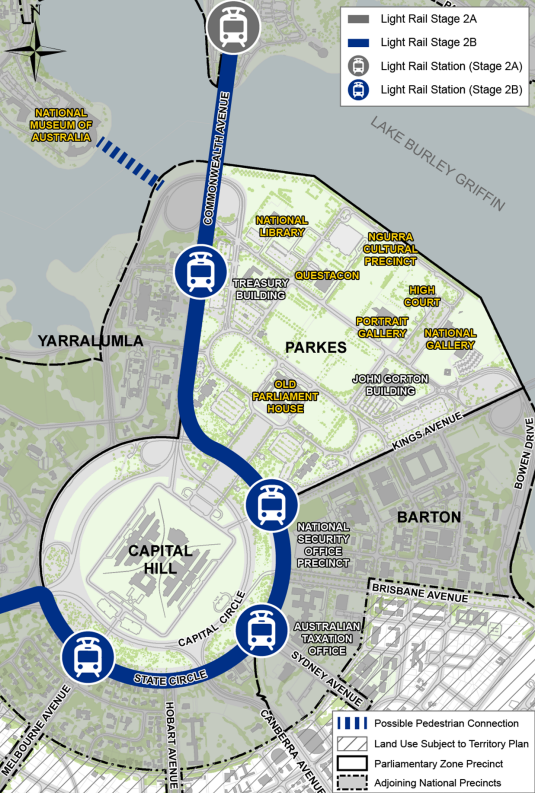
A modified extract from the National Capital Plan with a proposed light rail stage 2 route. Photo: PTCBR.
PTCBR argued the Commonwealth should take primary funding responsibility for the section of the light rail through Federal land as it would fulfil a key part of the National Capital Plan by linking national attractions, as well as provide benefits for government workers and cultural institutions.
“It is clear the Commonwealth intends to develop this area further, given the planned relocation of the Australian Taxation Office and national security agencies, and light rail will play a key role in allowing several thousand more workers to access the area,” it stated.
“If light rail already existed, the questionable multi-storey car park structure adjacent to the John Gorton Building may not have been required.”
At the very least, PTCBR submitted the Commonwealth should give money to the ACT Government to deliver a jointly agreed level of public transport service to the national institutions.
It argued while some places were serviced well by the R2 and R6 buses, others did not offer a suitable level of service. This included Parliament House, the Royal Australian Mint, the Australian War Memorial, the National Museum of Australia and the Australian National Botanic Gardens.
“The Commonwealth should take greater responsibility for ensuring appropriate public transport access to the institutions,” PTCBR submitted.
“PTCBR submits that half-hourly service during weekdays, and hourly service on weekends, is an appropriate level of service.”
A pedestrian access option across Lake Burley Griffin from Acton to the National Museum of Australia was also suggested in PTCBR’s submission.












